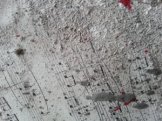Analysis of Structures

MSc Computational Mechanics
Elective module
SWS: 4
Credits: 6
Mode of teaching: lecture, tutorial
Teaching staff
| Lecture: | Dr.-Ing. Georgia Kikis |
| Tutorial: | Dr.-Ing. Georgia Kikis |
Date and time
| Mode of teaching | Lecture |
| Every summer and winter semester | See the AoS Moodle course for details |
| Tutorial | |
| See the AoS Moodle course for details | |
| Examination | |
| Assignment (100%) |
Learning objectives
Students acquire the ability to use spatial elements for structural modeling. Starting from the approach to linear calculations, students learn the application of stability analysis using FEM. In doing so, the students learn the importance of the approach when considering geometric and physical nonlinearities. Furthermore, the students learn to interpret the calculation results and iteration progressions. At the end of the course, what has been learned is extended to the dynamic analysis of systems. The goal is to automate FE calculations using the Python programming language in the form of scripts on the Abaqus platform.
Content
Modeling- Plane bar structures
- Modeling of surface and volume structures
- Calculation and verification of calculation results of spatial systems
- Geometrically nonlinear calculations (2nd order theory)
- Physically nonlinear calculations, material laws
- Stability analysis of profiles using the finite strip method
- Failure modes of profile geometries (local, global stability failure)
- Dynamic analysis (frequency analysis, modal analysis)
Programs and Tools
| Programming language: | Python 2.7 |
| Integrated development environment | PythonWin, JetBrains PyCharm |
| Finite Element Analysis Software: | Abaqus |
